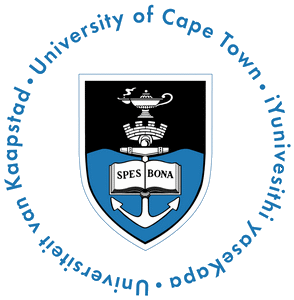On Line

E.B.E.
|
EEE3074W:
Embedded Systems
On Line
|

E.B.E. |
| QMarks | Details | Feedback |
Scope: Use of the Vula "online learning environment" in this
course, and the forge.ee server.
You may have already used online learning resources hosted on the Vula website in other courses. You most likely have used Vula services. For courses, Vula offers many features. This courses uses some of these features; the features that are used, and for what purpose, are outlined below:
| Connect Feature | Use in EEE3074W |
| Calendar | Use this to see up-coming deadlines, hand in dates, and exam/test dates. |
| Showcase | For the project, you are required to work in teams, in which you first come up with a concept, then develop concept slides for a presentation and a poster. The showcase is used to indicate who is working on what team. |
| Course outline | Indicates each lecture, a brief (1 paragraph) outline of what the lecture was about, and includes links to associated resources and websites. |
| Lecture notes | This lists all the lecture notes that were provided with the lectures. Occasionally hardcopies/photocopies will be handed out, and won't be available in digital form (but the associated lecture will indicate that a hardcopy handout was given). |
| Assignments | This includes various tasks, including laboratory practicals, homework, an essay, and project milestones together with links or information about where required resources are obtained (most are on forge.ee). |
| Chat | This service can be useful if your team is working remotely at different PCs. |
| Forum | Ask question and share suggestions. Details on what you can ask, and what you can answer will be explained in the first lecture. |
| Resources | The downloadable resources, including lecture notes and reading assignments, are available here. |
| Contributors | People who have contributed to the course and/or to this website. |
The forge.ee machine is a Linux server, which runs Knoppix, a distribution of Debian. All students registered for the course will be provided with a login to this machine.
The following is a list of special folders on forge.ee:
| Path | Description |
| /EEE3074W | All assignments and resources available to all students doing this course. Includes the baseline frameworks for assignments, tutorial sheets, as well as the software (cross-compilers, editors, etc). |
| /REPOSITORY | Shared folders for the different teams are under here, in folders named TEAM01 ... TEAMXX where XX = number of teams. |
| ~/REPOSITORY | This is a sort link to the relevant TEAMYY folder, where YY is your team number. |
| ~/MARKS | Digital marking sheets (detailing comments and marks you got for certain questions of an assigment) are placed here. See: Sample Marksheet. |
| ~/aoa | This is the entry point of your ESAOA project directories. All the projects should be in a Projects directory under aoa. |
The following is a list of special folders on forge.ee:
| Tool | Description |
| QMarks | Students can use this program to access their results online. It gives a table of all the marks for every assignment that counts towards their final mark, and indicates an estimated end of semester, and end of year mark. So you can keep track of how well you're doing. The QMark results are only updated once marking of a complete set of assignments is complete. Your marks are generally not posted on any notice boards. |
| ESAOA Tools | There's a whole lot of executables and scripts which are part of the ESAOA-Tools distribution that are installed on forge. You can install ESAOA-Tools under Cygwin or on Knoppix (works on most version of Linux on a PC). |
| GNU Tools | The usual bintools, make, etc, which everyone
needs. Available as tar.gz files if you want to install it on your home
PC or laptop. |
| OpenOffice | You don't have to use MicroSoft (TM) Office. OpenOffice is quite compatible with MS Office documents. Indeed, since I use mainly OpenOffice and open-source tools, it's more convenient for me, if you use OpenOffice documents. |
| MicroMonitor
source code |
MicroMonitor is the Boot Monitor developed by Ed
Sutter, and is available for download from MicroCross. It is also
installed on the CSB337 evaluation boards used in this course.
MicroMonitor source code is available on forge. |
| SnapGear | SnapGear provides the sourcecode for the uCLinux
distribution of Linux ported to the CSB337 and similar boards. This is
investigated in the final practical, and students can customize the
kernel for use in their subsystem prototype project. |
| Umbrello | UML modeling tool*. |
| BoUML | Another good UML modeling tool*. |
For more detail on software, see EEE3074W Software.
* I don't mind if you use OpenOffice or MS Word instead of the suggested UML modeling tools.
The original plan was that students can boot any Pentium-compatible PC using a Knoppix Live CD to work on assignments; provided that they have access to
either 1) a flashdisk supported by Knoppix, 2) a network drive (e.g. samba
mount), 3) access to a
writable VFAT partition, or 4) some other means to store about 64Mb permanently.
The permanent memory would obviously be needed to store the student's assignments
and the ESAOA tools. If you want to
take the plunge, and install Linux on your machine, then you can obviously use
that instead (I would recommend this route if you plan to do a significant
amount of practical work on your own machine). Being able to continue working on
assignments using your own machine has definite advantages, such as not having
to quit working due to the lab closing for the night.
Copyright (c) 2007, S. Winberg, University of Cape Town. Site maintained by: S. Winberg, Department of Electrical Engineering, University of Cape Town.